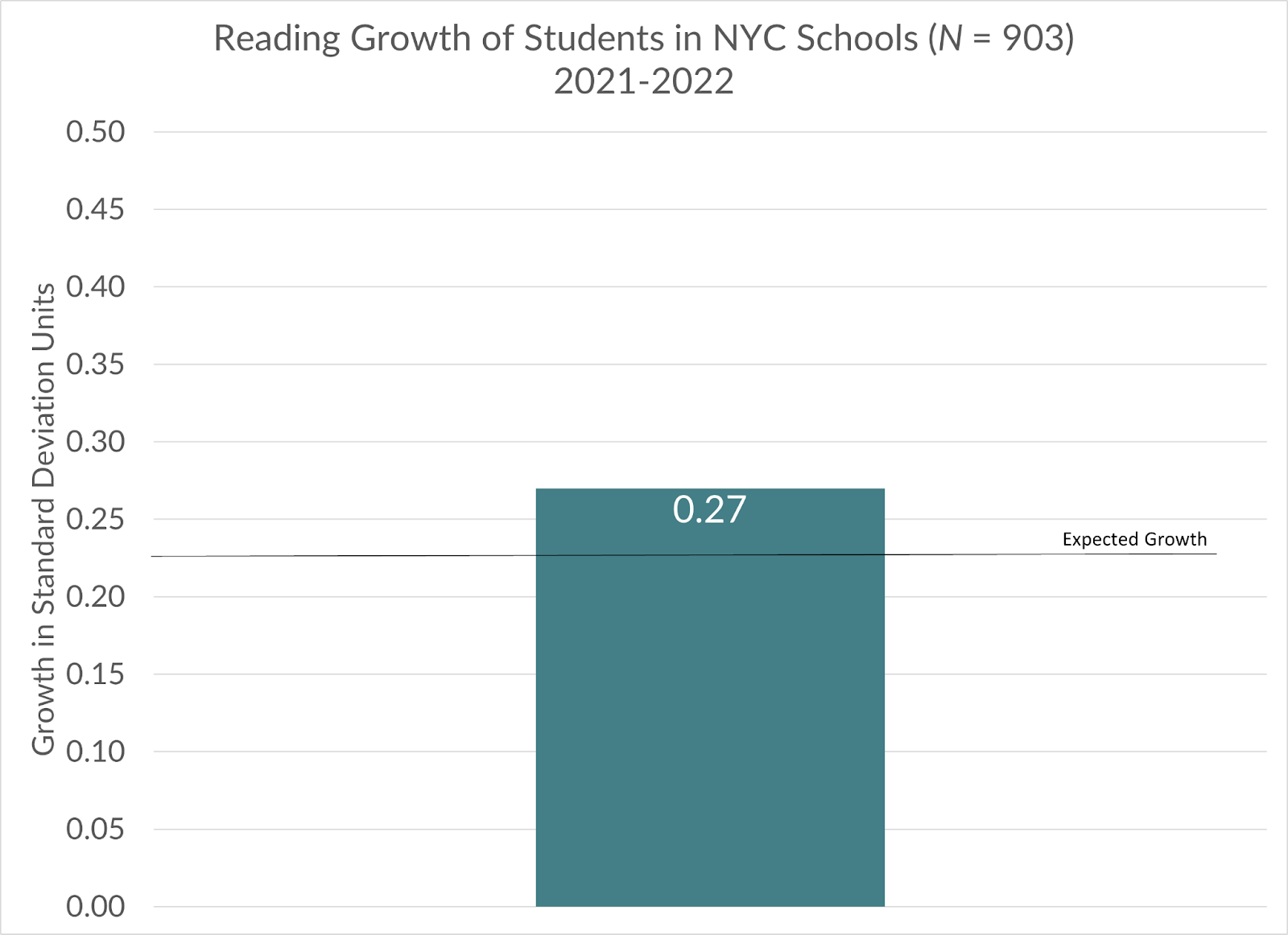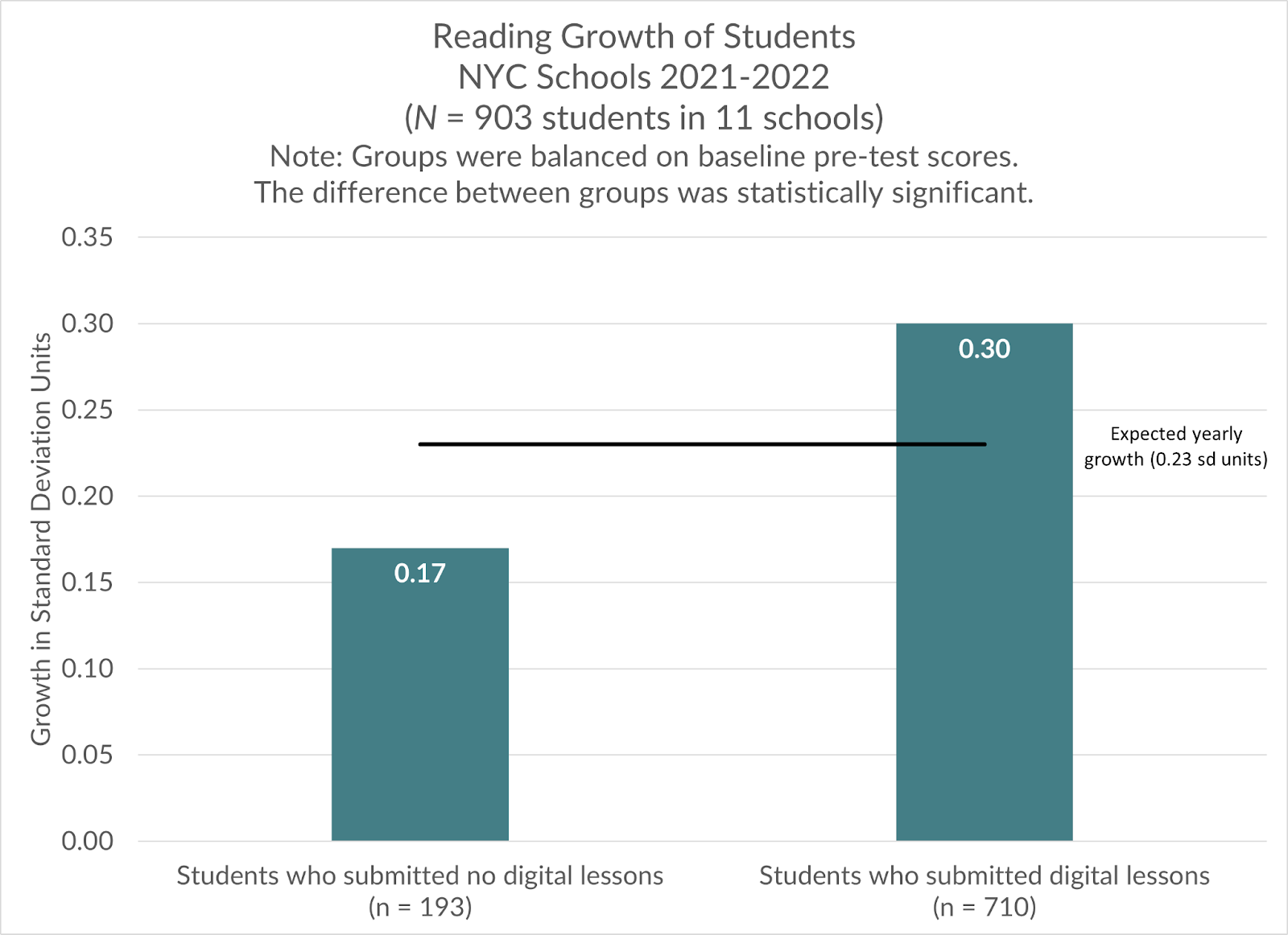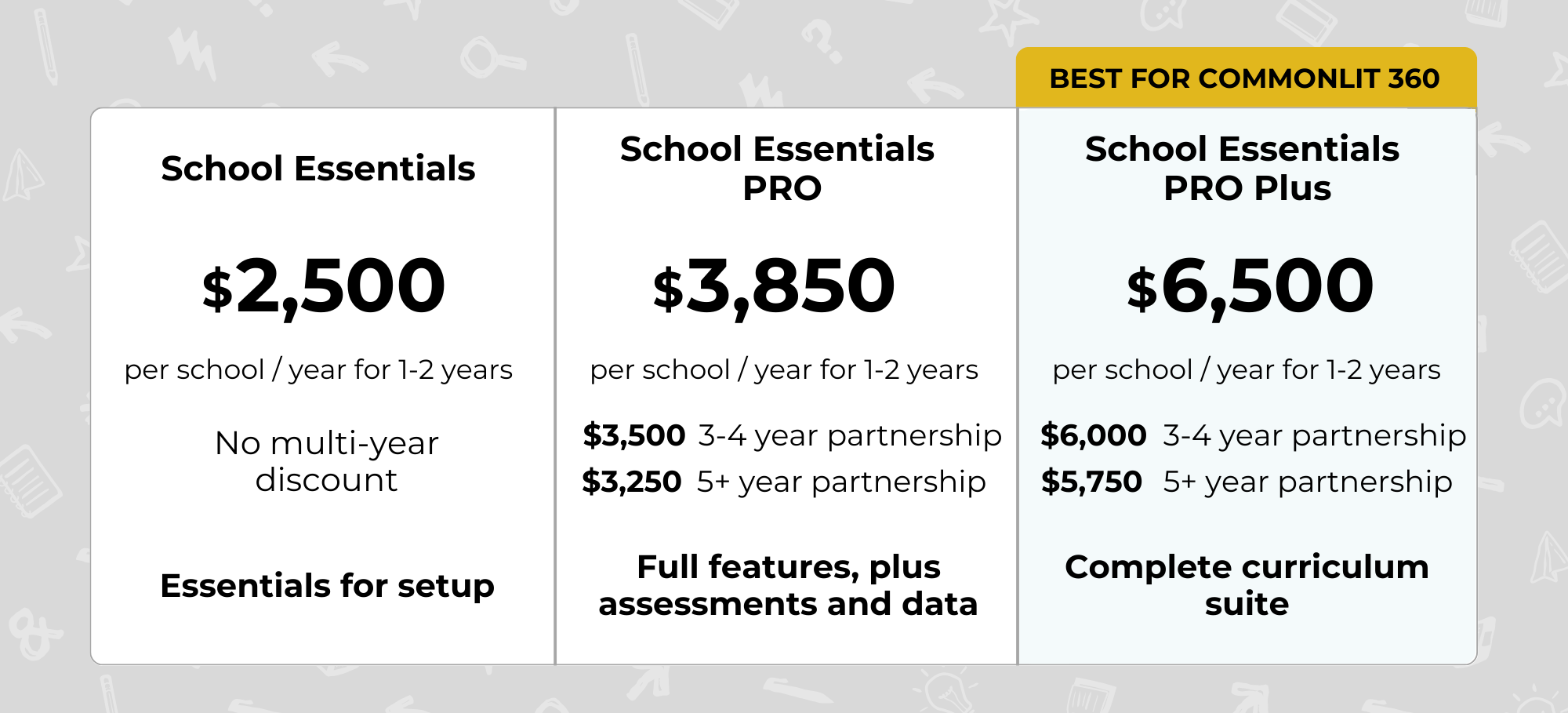 Insights
CommonLit 360
NEW: CommonLit 360 Drives Academic Improvement in NYC Schools
Insights
CommonLit 360
NEW: CommonLit 360 Drives Academic Improvement in NYC Schools
A new study of CommonLit 360 across 11 middle schools shows strong growth in reading achievement among kids utilizing the curriculum.
CommonLit 360 is CommonLit’s new comprehensive, engaging, and easy-to-implement full year curriculum for English Language Arts. So far, four studies have been conducted on its effectiveness. Most recently, a study of CommonLit 360 during the 2021-2022 school year underscores how schools can use the program to drive academic progress and close opportunity gaps.
Here’s more about the study design: During the 2021-2022 school year, CommonLit had a partnership with 21 middle schools in New York City to implement and study CommonLit 360 in their classrooms. CommonLit provided these schools with access to the CommonLit 360 curriculum units and the wraparound services that drive implementation success including from the School Essentials PRO package. This package includes professional development, benchmark assessments, administrator data-tracking tools, LMS integrations, and priority customer support.
The sample included a total of 903 6th-8th grade New York City students who completed the CommonLit Assessment Series, our valid benchmark reading assessments, at the beginning and the end of the year. These assessments have been calibrated on over one million students and are designed to measure growth at the beginning, middle, and end of the school year.
These students in the analysis were from 11 public schools in NYC with complete data, with 331 6th grade students, 319 7th grade students, and 253 8th grade students. Nine of eleven of these schools (82%) are Title I schools, with 80% of students in the sample qualifying for free or reduced-price lunch. Over 93% of students in the sample represent students of color, and 19% of the population represents students with disabilities.
The findings speak to the promise of the CommonLit 360 program:
Key Finding #1: Students in the 11 CommonLit 360 schools saw accelerated learning overall – growing more than what is expected for the typical middle schooler.
The expected value of middle school reading growth is +0.23 standard deviation units (Hill et al., 2008).
On average, students involved in this study grew by +0.27 standard deviation units. This means that students using CommonLit 360 experienced more than expected growth for a typical middle schooler.

Key Finding #2: The more CommonLit 360 digital reading lessons submitted, the greater student growth in reading achievement.
After controlling for pretest, Title I, grade level, and teacher, the number of CommonLit 360 lessons submitted by a student positively and significantly predicted growth. That means the more CommonLit 360 digital Essential Reading Lessons submitted, the greater student growth – even when controlling for important factors.
Students who submitted some CommonLit 360 digital lessons grew an average of +0.30 standard deviations units, while students who submitted no digital lessons grew +0.17 standard deviation units. Prior to analysis, the two groups were balanced on pre-test scores and grade level.

This graph shows a strong relationship between CommonLit 360 lesson completion and student growth in reading achievement. Students who submitted digital CommonLit 360 lessons grew nearly 2x the growth of those who did not submit any CommonLit 360 digital lessons. Students submitted 6.43 CommonLit 360 digital lessons on average.
Observational Findings
Observational Finding #1: There was an observed relationship between teachers’ professional development session attendance and student growth.
CommonLit’s professional development is an important part of the CommonLit 360 package – and may be a predictor of better outcomes for students. In our analysis, students in schools whose teachers participated in professional development tended to show greater student growth over the course of the year compared to teachers who did not attend professional development sessions.
For example, one school’s teachers attended four professional development sessions. The students in this school grew 0.62 standard deviation units – approximately 3x the average growth for middle schoolers.
Observational Finding #2: A majority of teachers endorsed CommonLit 360 and reported observable gains in student skills and their own pedagogy.
We surveyed 55 middle school teachers in NYC at the end of the 2021-2022 school year. Teachers were asked whether they felt that CommonLit 360 improved their students’ reading, writing and discussion skills. Survey data revealed that teachers were most likely to report that CommonLit 360 helped their students’ reading skills (91%) and discussion skills (81%) improve. Many teachers also reported that CommonLit 360 helped their students’ writing skills (66%) improve.
Teachers were also asked whether they thought that CommonLit 360 was a tool that would help them improve their teaching practice, and how likely they were to recommend CommonLit 360. Of the teachers surveyed, 81% responded that CommonLit 360 helped their teaching practice and that they would recommend CommonLit 360 to a colleague. This translates to a Net Promoter Score (NPS) of 43, which is considered “great” – and suggests that many CommonLit 360 teachers are active promoters of the program to colleagues.
Qualitative Findings
Interviews with teachers underscored CommonLit 360’s outsized impact on student engagement. One seventh grade special education teacher explained, “My students have NEVER been more engaged in reading. They don’t dread ELA class…because they know it’s going to be high interest.”
Another theme from teacher surveys was that teachers value CommonLit 360 for saving them time. A seventh grade teacher told us, “One of the hardships of being an educator is the amount of planning there is to do and the little bit of time to get it all done. Having a platform like CommonLit makes things much easier because each unit has already been created. I am able to use this and differentiate my instruction as I see fit to best help support my students.”
Throughout the study, teachers also praised CommonLit 360 for its comprehensiveness and flexibility of the unit design. Interviews also reveal that teachers appreciated the text selection, particularly the diversity of authors and topics.
An ELA Instructional Coach at another school explained, “I love that CommonLit has the awareness to prioritize diverse writers…before my school adopted CommonLit as our curriculum, I struggled with the fact that all of the authors we had to teach were of the same ethnicity…I’ve never been more elated and relieved to see such widespread diversity in the cultural perspectives of the authors centered in CommonLit 360 units across all grades.”
Get These Results in Your District
If you’re excited about CommonLit 360 and seeing these results in your school or district, we recommend purchasing our highly-affordable School Essentials PRO Plus Package.
This package will give your school access to everything that helped our partner schools achieve these incredible gains, including:
- Benchmark assessments and unit skills assessments
- Ongoing, customized professional development
- Administrator data dashboards
- LMS integrations, including Canvas, Clever, and ClassLink
- A designated account manager and priority customer support

If you would like to talk with a CommonLit 360 specialist about our paid packages, schedule a quick call. We’re looking forward to hearing from you!
Hill, C. J., Bloom, H. S., Black, A. R., & Lipsey, M. W. (2008). Empirical benchmarks for interpreting effect sizes in research. Child Development Perspectives, 2, 172-177.

